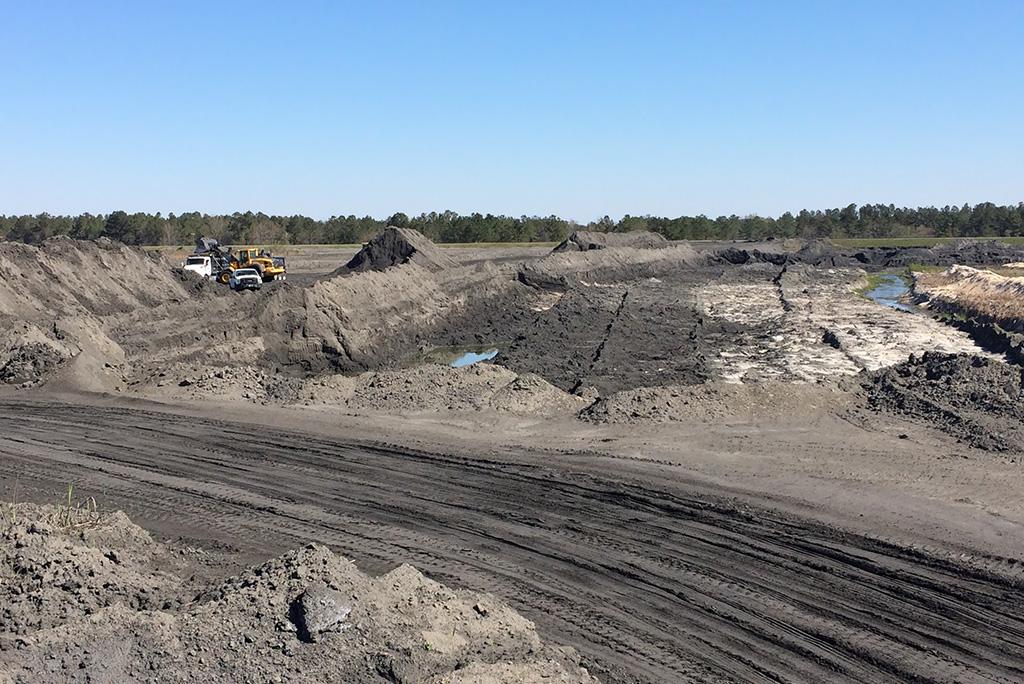
Harvesting a former coal ash impoundment
Project Highlights
- Identify and understand potential unintended consequences when closed CCP units are harvested
- Predict potential changes in CCP porewater volume and chemistry during harvesting
- Improve the operation of leachate collection and treatment systems during harvesting operations
- Inform mitigation of potential groundwater compliance impacts during harvesting operations
Background, Objectives, and New Learnings
The transition from coal to other sources of electric energy has created a shortage of coal combustion products (CCPs) for use in concrete, wall board, and other products. Furthermore, efforts to decarbonize the cement sector are anticipated to increase demand for coal ash well above current levels. There is considerable interest in recovering and using CCPs contained in ponds and landfills. Market demand has already led to development of several pond and landfill harvesting projects. In addition to harvesting for beneficial use, some electric utilities are considering excavating certain CCP landfills and impoundments that may be intersected by groundwater where engineering controls are not available to control groundwater flow into the unit.
Uncertainty regarding the potential for operational and environmental impacts is hindering the ability of utilities to fully assess the benefits and risks associated with excavating CCPs. Harvesting for use and excavation for closure scenarios present similar questions:
- Could removing a cap and harvesting CCPs from a closed unit impact the volume and chemistry of CCP porewater within the unit?
- Could these changes impact existing treatment systems for units with liners and leachate collection systems?
- Could these changes affect compliance with groundwater quality standards near the harvested units?
The objective of this research is to produce data and information that can be used to answer these and associated questions, which may aid CCP pond and landfill owners in their assessment of options to reduce long-term liability associated with closed CCP ponds and landfills.
Benefits
This research is expected to benefit the public by addressing uncertainty that currently hinders harvesting of CCPs for beneficial use. If the outcome of this research is increased CCP use, the result could be an increase in sustainability and circularity, as there will be less land disturbance and carbon dioxide emissions associated with production of the native materials that CCPs replace. Excavating certain CCP management units may also lower environmental impacts by reducing source material associated with groundwater contamination.
Project Approach and Summary
The research is designed in three phases. The final scope of phases 2 and 3 will depend on total project funding.
- Phase 1 may consist of geochemical modeling to evaluate the impact of cap removal on redox conditions and porewater chemistry within a CCP unit. Several different scenarios could be modeled to explore similarities and differences between bituminous and subbituminous ash chemistry, dry and wet deposition, varying degrees of organic carbon, and different initial pH and redox conditions.
- In Phase 2, collection of field observations or appropriately scaled lab observations would be beneficial to evaluate the impact of excavation and exposure of fresh ash surfaces to CCP porewater quality and quantity. These data can be combined with learnings from Phase 1 to inform Phase 3.
- The third phase of this research could use multi-scenario reactive transport modeling or similar techniques to review the effect of harvesting on the chemical signature and volume of CCP porewater, potential effects on CCP leachate treatment systems, and potential considerations for groundwater compliance. Modeled CCP porewater concentrations and volumes at the base of the simulated ash deposit enable quantification of potential impacts for leachate treatment systems, while concentrations in groundwater at a simulated compliance boundary could provide information on potential impacts to groundwater compliance.
Deliverables
Technical updates will be provided in 2025 and 2026 with a final technical report or alternative format deliverable in 2027. In addition, there will be periodic webcasts to inform participants of research status.
Price of Project
Pricing will be tiered based on the funder’s non-nuclear generation capacity.
Companies with more than 15 GW of capacity: $70,000 Companies with less than 15 GW of capacity: $40,000.
Funding can be paid in full immediately or distributed through the project duration (2024-2027).
Companies may be able to fund this research using their asset retirement obligation (ARO) budget or EPRI Self-Directed Funds (SDF).
Project Status and Schedule
This project will begin when the first funder joins, and completion is anticipated in 2027.
Who Should Join
Companies that have or will have closed coal ash landfills and impoundments are encouraged to participate in this research. Given the diminishing production of US coal ash, there will be increasing pressure in the future to uncap these units to harvest this commodity.
Contact Information
For more information, contact the EPRI Customer Assistance Center at 800.313.3774 (askepri@epri.com).
Technical Contacts
Ben Gallagher at 650.338.8653, bgallagher@epri.com
Lea Millet at 470.747.2552, lmillet@epri.com